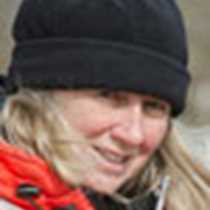Drake Passage
We fly straight as an arrow from English Strait in the South Shetland Islands to the famed island of Cape Horn. Our course varies only with the swaying of the bow, a fraction of a degree to starboard and then to port, but the trend is always the same. Seldom can one travel “as the crow flies” with no obstacle to block the way. Here in the Southern Ocean we are alone. No land lies on the horizon and no traffic within our sight. Wildness surrounds us.
One can stand on the deck, quietly, alone and hear the ocean’s rhythms. A percussive crash is followed by a moment of silence and then a crescendo of phrases, like the lengthy wash of a wave on a beach as the breeze increases. One can feel the wind nipping at one’s fingers. In early morning it pushed us steadily forward. At any one moment the currents of air might seem to be on just as direct a course as we until one notes the motion of the vessel change as the hands on the clock march around. Systems circle the southern ocean unimpeded. We are but a miniscule particle in their passage.
Alone but not alone, we travel slightly north of northwest. Soaring seabirds are our constant companions. Hours go by rapidly while we watch their rise and fall. We calculate their trajectories as they dash by, descending downwind, only to turn into the wind to gain altitude again. Speckled chocolate brown and white, pintado petrels make mesmerizing patterns against the turquoise sea. With spots organized dark forward and aft white, the rare Antarctic petrel plays a game of “find the one that’s different.” Delicate snow petrels glow against the darkening water, following us no further than does the cold Antarctic water. As the birds of farthest south decline, their larger relatives appear. Three species of albatross and giant petrels take over the shepherding duties.
Inside is a time of introspection, a time to reflect on the days gone by. Were they really real? The sounds, the smells, the ice and cold, the plethora of wildlife meld with the majesty of the lands we leave behind. They are now a part of each of us. The challenge comes in synthesizing and telling our story to others back at home.




